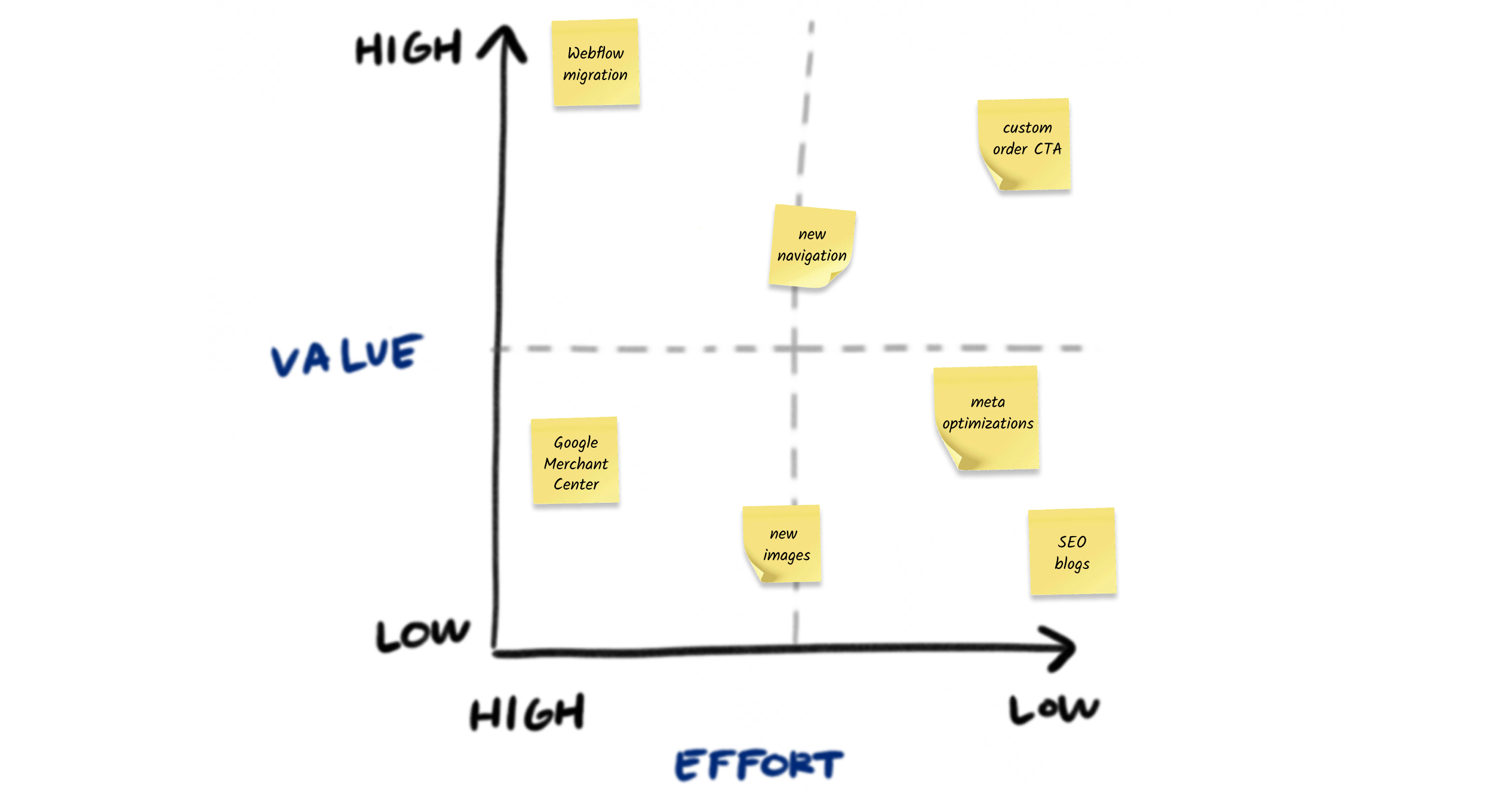

Illuminaries’ eCommerce store wasn’t bringing in many visitors, let alone converting them into customers.
Targeted SEO strategies, user experience improvements, and digital marketing initiatives to jumpstart traffic and sales.
A 75% increase in website traffic and a 300% rise in sales conversions in the first year.

Trick question: What do the movies Scrooge, Sleepy Hollow, and the live-action remake of Beauty and the Beast all feature?
If you guessed mystical creatures, you'd be right. But you might not guess that all these films have something else in common: they all feature wrought iron light fixtures as part of their old-world set designs.
Where do production teams find these fixtures, and how can homeowners acquire them as well? Set producers typically acquire fixtures by commissioning custom pieces from skilled artisans. Homeowners are left to browse the junk on Wayfair or, perhaps, spot one at a salvage yard or antique shop.
That’s the challenge that Kim Harper, founder of Illuminaries, set out to solve in 2010. By making the fixtures in-house at her Austin-based facility, she could ensure consistency in their design and craftsmanship. And by shipping them out the door (anywhere in the world, to be exact) everyone from movie set designers to homeowners could have them.
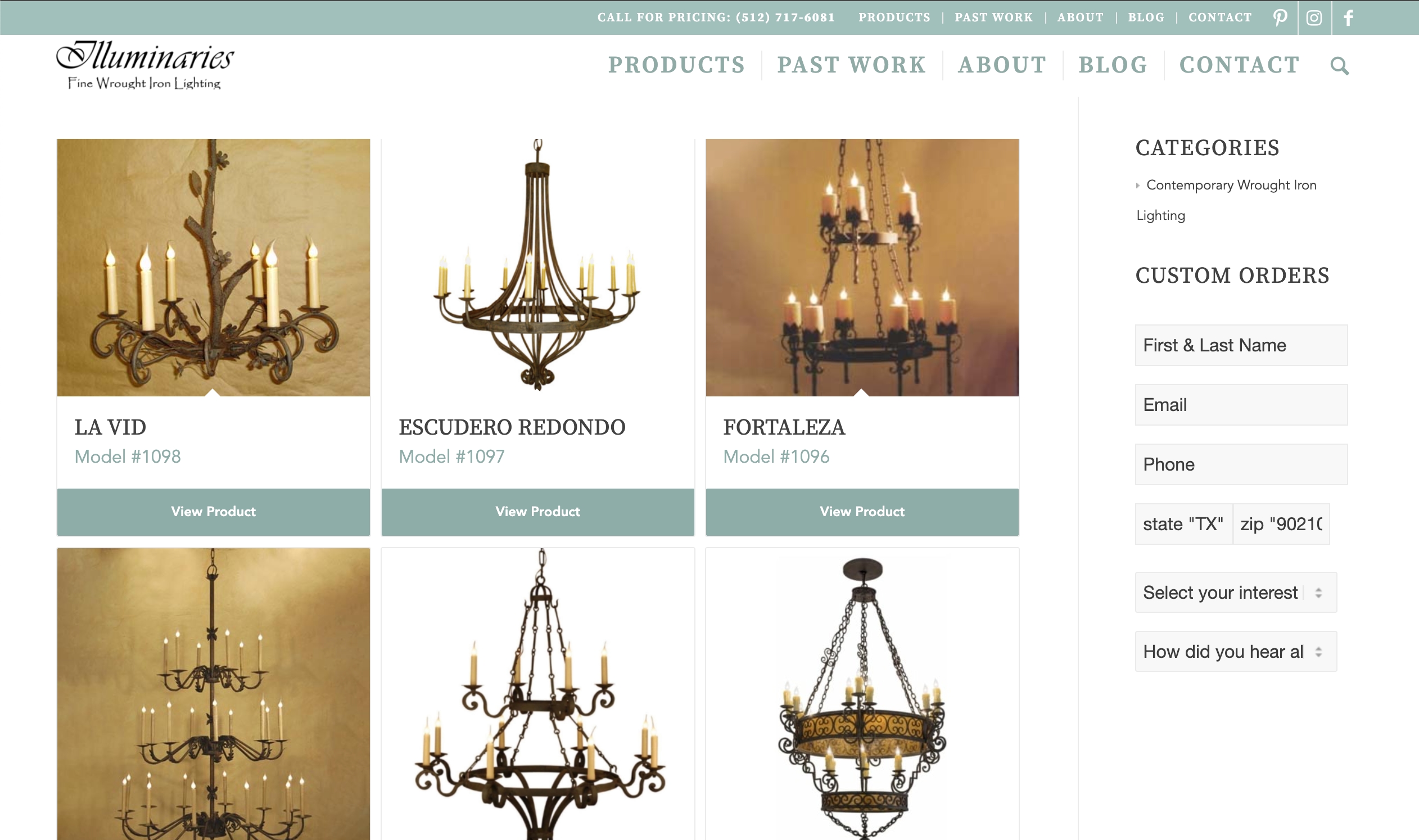
Unfortunately, when Kim first launched her online store in 2010, she figured people would trickle in the same way that everyone else found her: through her reputation and word-of-mouth. But after a few years of low traffic and dismal online sales, she realized that the digital landscape required a different approach.
That’s when she sought the experts at Geek Powered Studios, a remote-based marketing agency where I was then an SEO Specialist.
To address the challenge of getting more traffic to the site, I started by auditing Illuminaries’s entire digital footprint—including their site analytics, SEO performance, user experience, and relevant channels.
Despite being visually appealing, I found that Illuminaries' website wasn’t optimized for search, lacked clear navigation, and wasn’t using their content to effectively engage and convert their visitors.

Given the large catalog of products and the specific target audience, I realized there was a huge opportunity to niche down and focus on specific product types.
I came up with a strategy to create SEO-optimized product category pages for key segments of the catalog—such as wrought iron chandeliers, wrought iron sconces, and wrought iron pendants—as well as other categories like gothic and colonial-inspired fixtures.

I also recommended we create blog content targeting long-tail keywords and specific customer queries for every stage of the customer journey. This included crafting detailed articles and guides for initial research, comparison pages for informed decision-making, and persuasive product descriptions for final purchases. This would help attract more qualified traffic and improve user engagement, as well as solidify Illuminaries’ topical authority—further improving their keyword rankings.
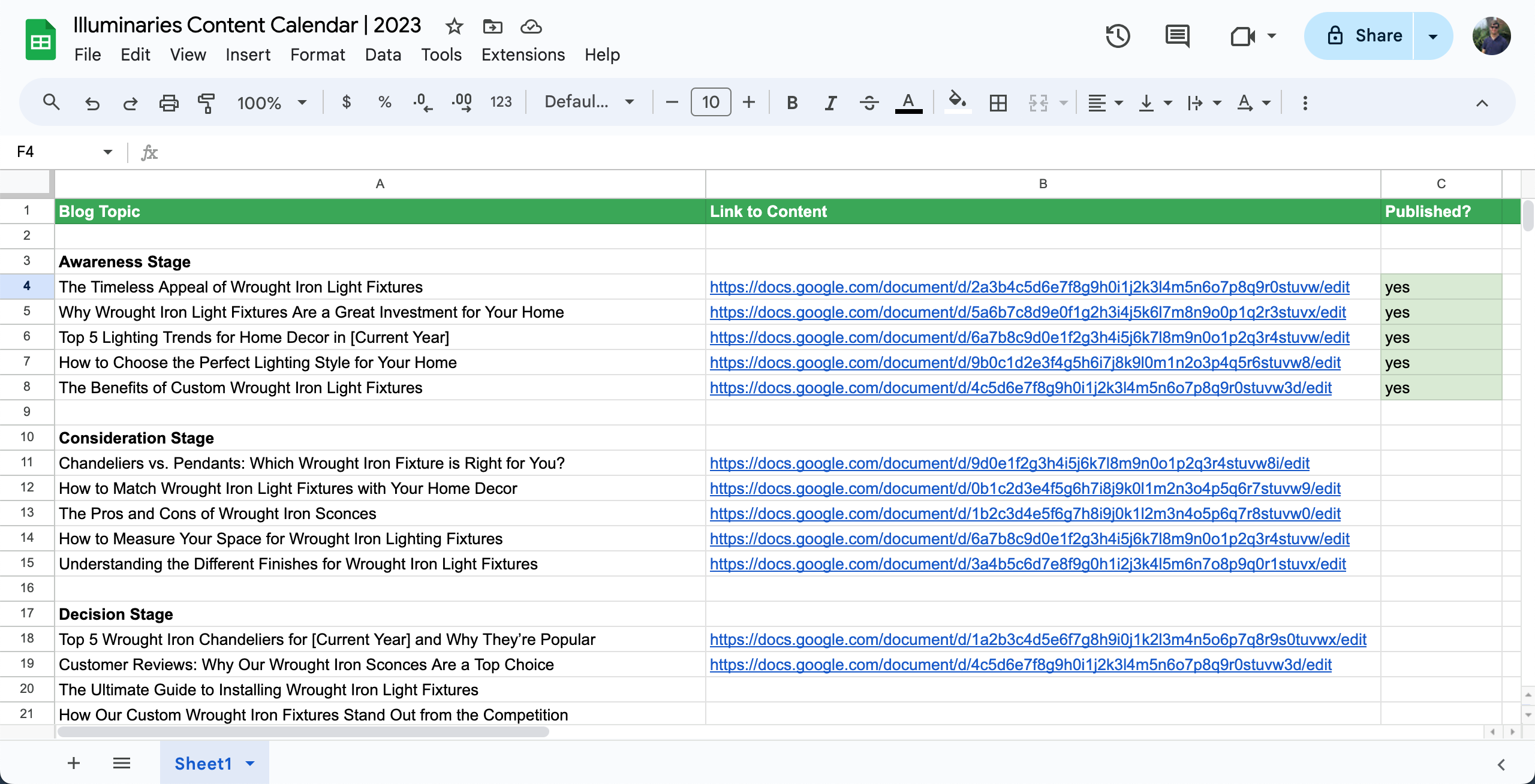
After analyzing the traffic data for the Illuminaries site, I saw that more than half of website visitors were coming from mobile devices. Recognizing that the site lacked intuitive navigation on mobile, I collaborated with our web development team to implement a mobile-friendly redesign. We also updated the product pages, improved page load speeds, and ensured the layout was responsive on all devices, collectively contributing to a more efficient user experience.

Despite implementing these fixes, I was dismayed to see that conversion rates remained low. To understand why, I conducted user tests and discovered that the “custom order” process wasn’t clearly communicated—an omission that was effectively killing our sales.
To address this, we redesigned each product page to include clear, step-by-step instructions for initiating a custom order, which nearly tripled our conversions when we A/B tested the change.
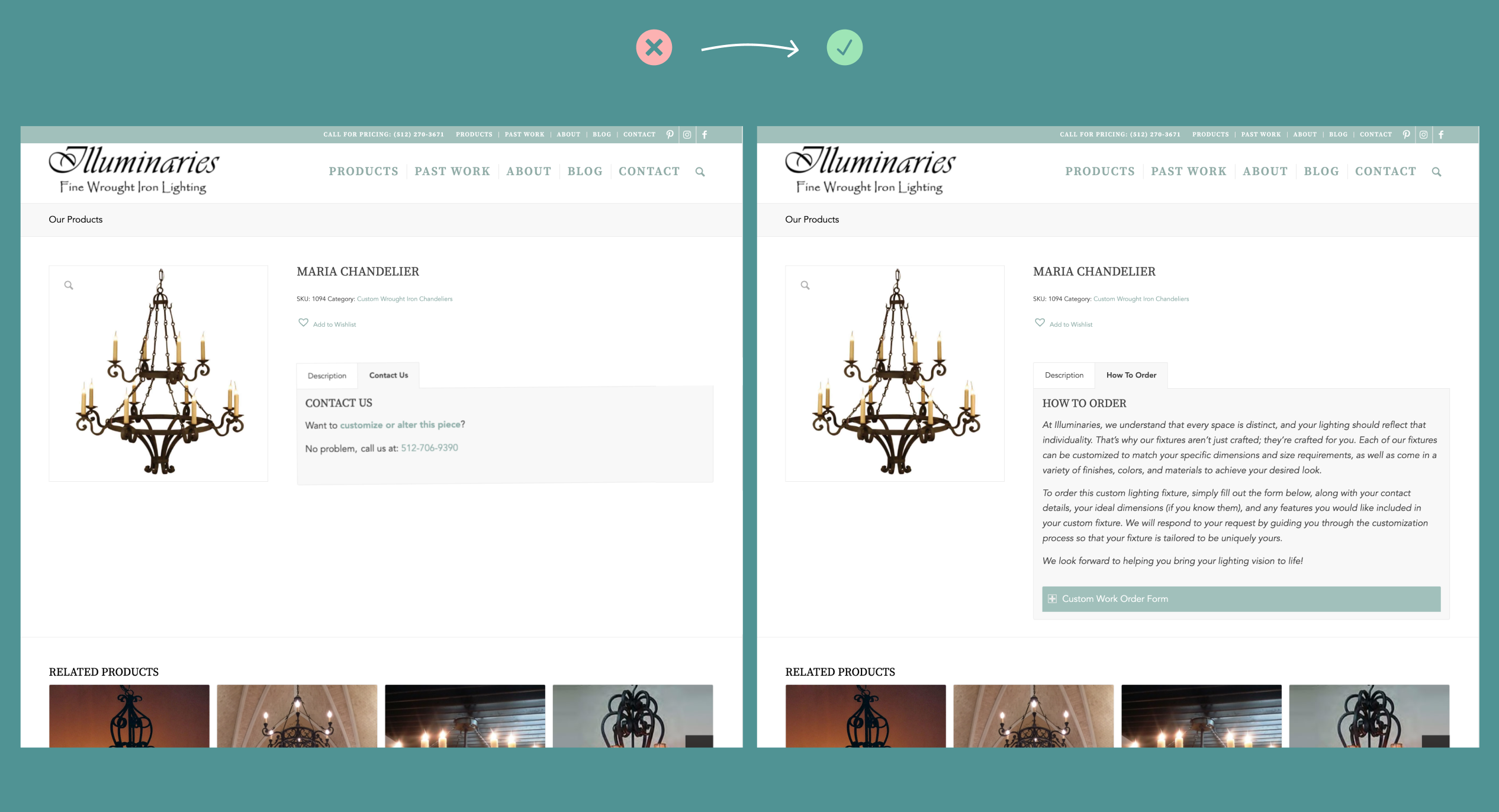
One year later, the impact of our improvements was evident and Kim and her team were astonished by the dramatic turnaround. The site was ranking for over 200 new keywords, 29 of which—including “wrought iron light fixtures”—were in the top 3 positions. Website traffic had increased by 75% over the past year and sales conversions had risen by over 300%.

Kim was also ecstatic to tell us that the production team for an upcoming adaptation of "A Christmas Carol" had recently reached out to commission several custom fixtures, after discovering their work online.
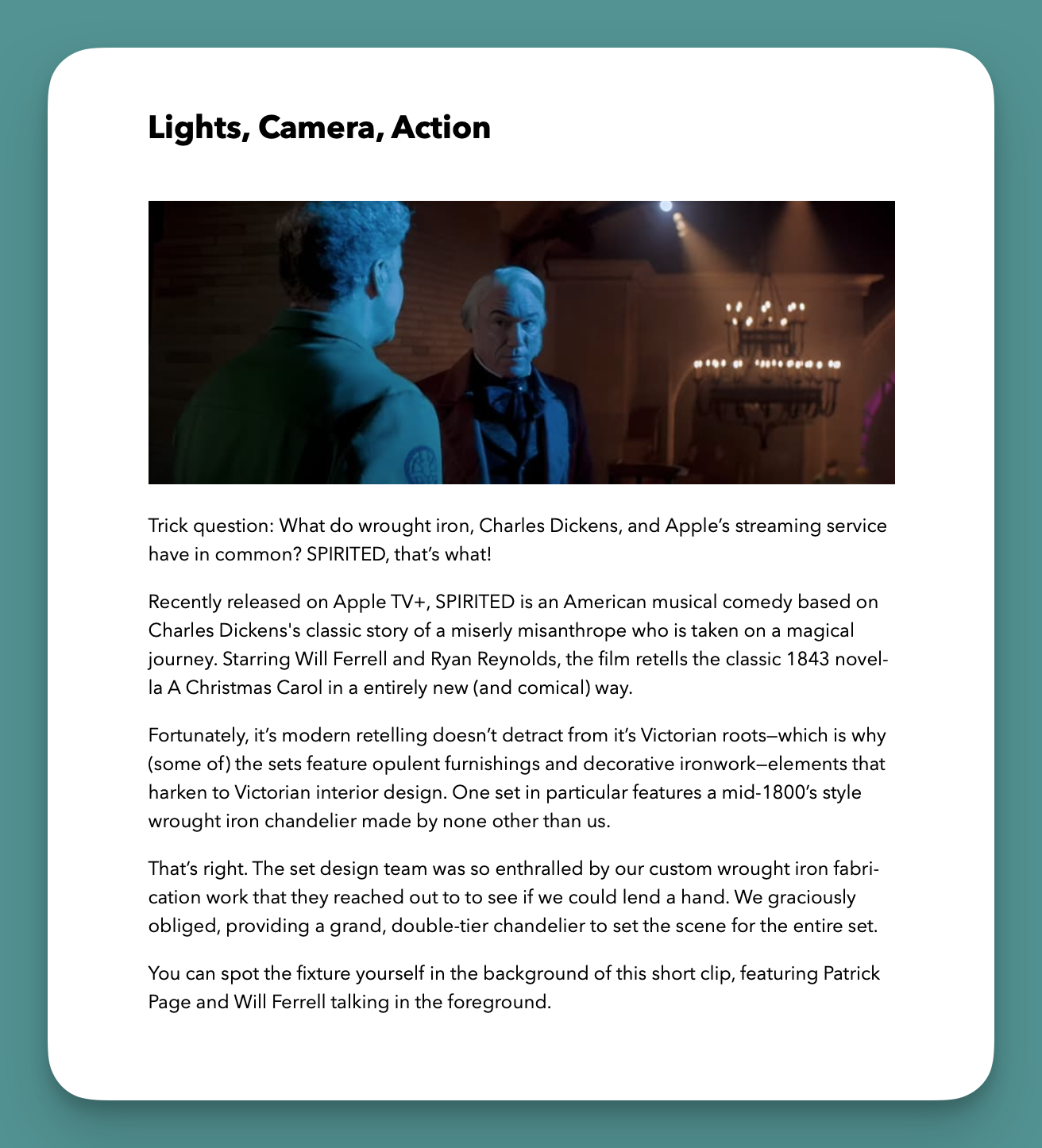
This was a thrill of a project to work on, mainly because I had my hand in so many facets of it. From crafting Illuminaries’ SEO strategy to running user tests and collaborating on design changes, it was great to be so involved and to see how each effort contributed to their success.
Unfortunately, Illuminaries didn’t have the budget to implement all the recommended changes (their site migration to Webflow is still in the works), so I gained a valuable lesson in resource allocation.
Generally speaking, it’s almost always best to focus on high-impact areas first and iterate from there. It can be tempting to try and address every issue simultaneously or work on low-hanging fruit, but prioritizing the most critical improvements ensures that you can make the most meaningful progress within your available budget. A lesson for another day.
